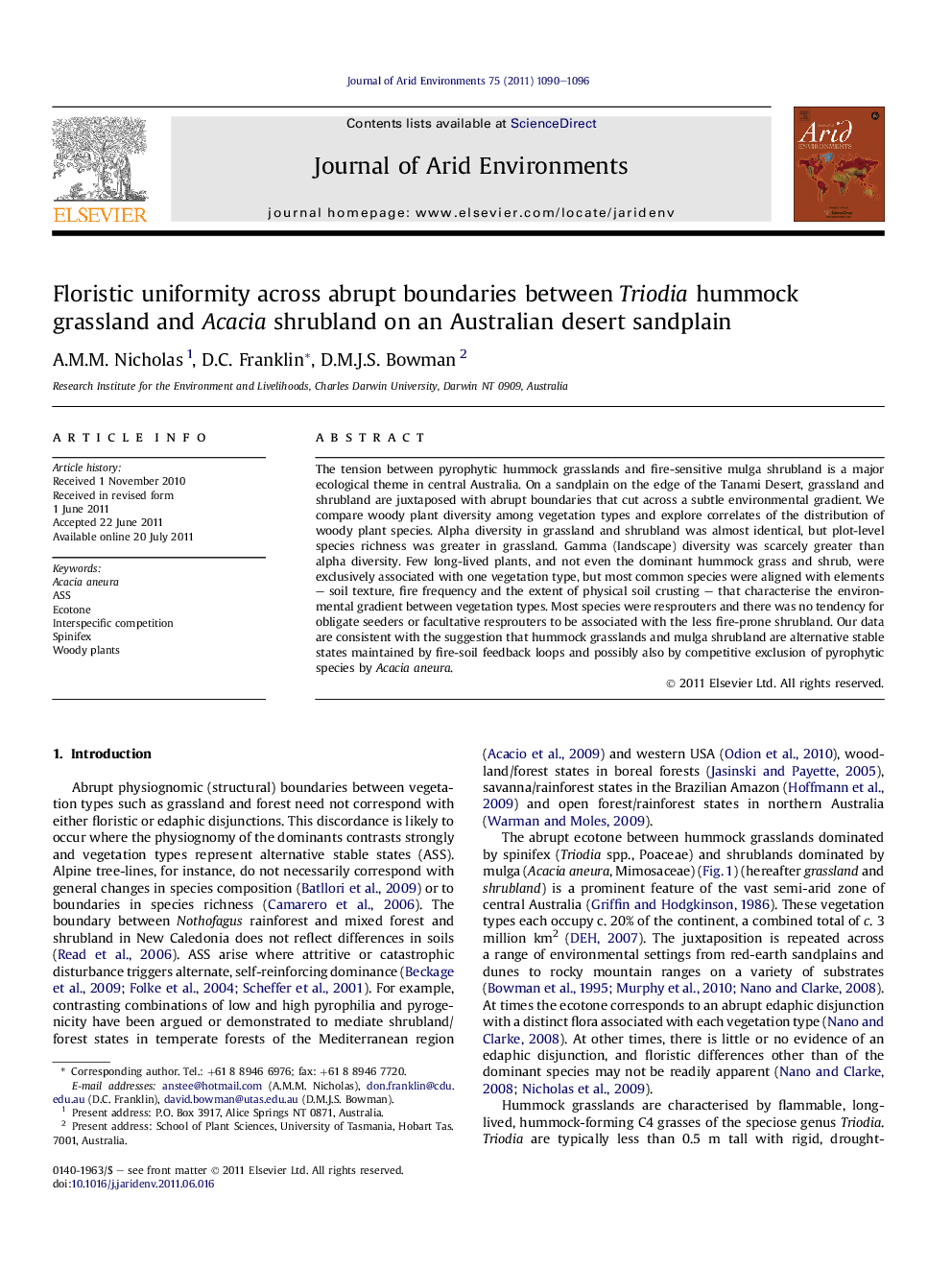| Article ID | Journal | Published Year | Pages | File Type |
|---|---|---|---|---|
| 4393571 | Journal of Arid Environments | 2011 | 7 Pages |
The tension between pyrophytic hummock grasslands and fire-sensitive mulga shrubland is a major ecological theme in central Australia. On a sandplain on the edge of the Tanami Desert, grassland and shrubland are juxtaposed with abrupt boundaries that cut across a subtle environmental gradient. We compare woody plant diversity among vegetation types and explore correlates of the distribution of woody plant species. Alpha diversity in grassland and shrubland was almost identical, but plot-level species richness was greater in grassland. Gamma (landscape) diversity was scarcely greater than alpha diversity. Few long-lived plants, and not even the dominant hummock grass and shrub, were exclusively associated with one vegetation type, but most common species were aligned with elements – soil texture, fire frequency and the extent of physical soil crusting – that characterise the environmental gradient between vegetation types. Most species were resprouters and there was no tendency for obligate seeders or facultative resprouters to be associated with the less fire-prone shrubland. Our data are consistent with the suggestion that hummock grasslands and mulga shrubland are alternative stable states maintained by fire-soil feedback loops and possibly also by competitive exclusion of pyrophytic species by Acacia aneura.
► Grassland & shrubland have abrupt boundaries on otherwise featureless semi-desert sandplain. ► There is little floristic difference between grassland and shrubland. ► Alpha diversity is similar in grassland and shrubland. ► Gamma diversity is scarcely greater than alpha diversity. ► The sandplain vegetation appears to be a model alternative stable states system.
